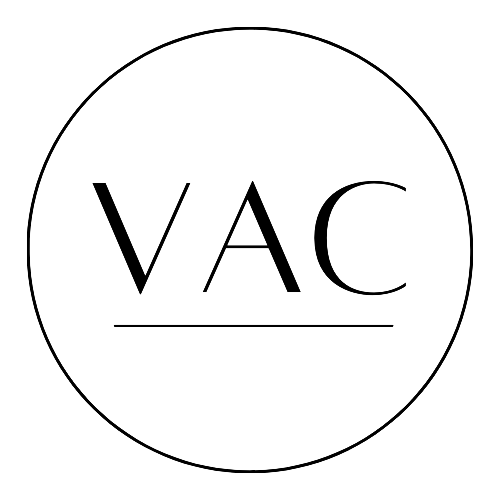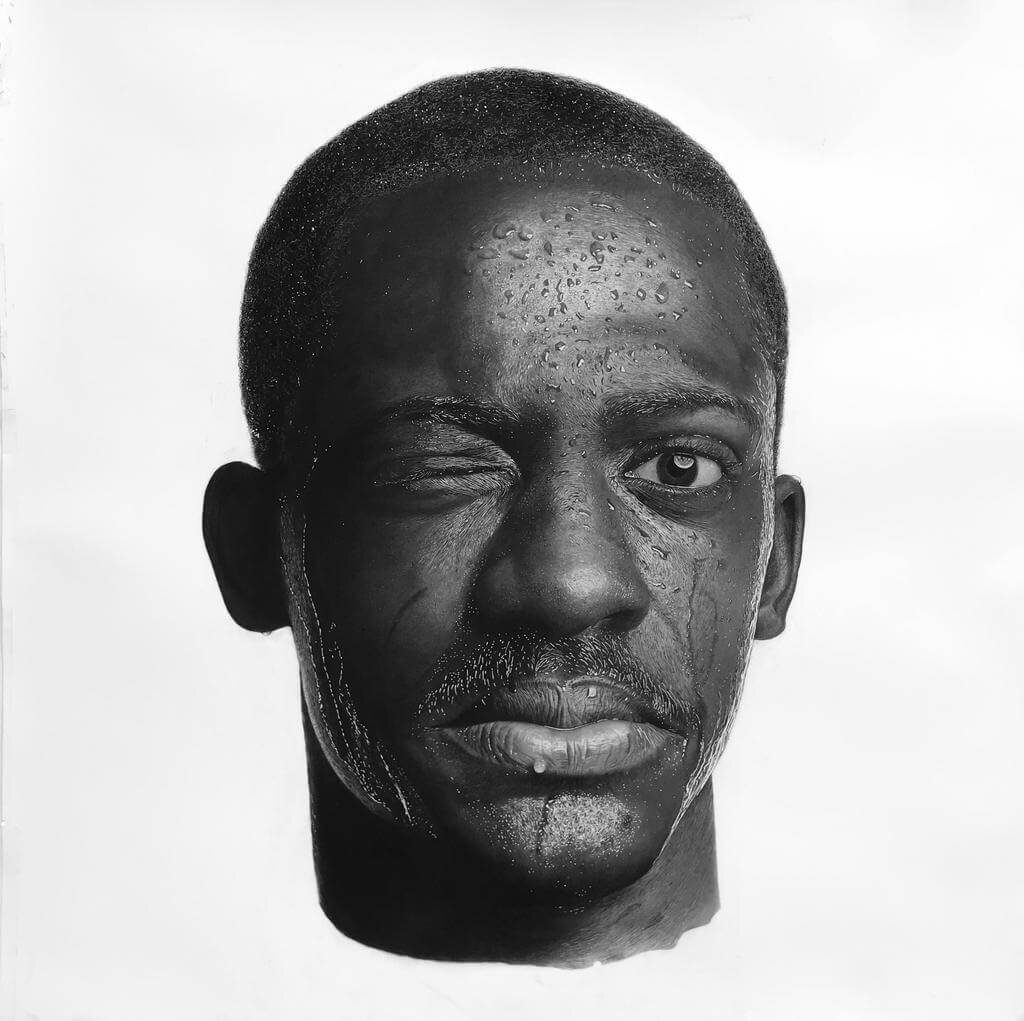Emmanuel Kolawole: The Limitless Possibilities of Portraiture
Nigerian Artist & Educator Emmanuel Kolawole rediscovered his passion for drawing in 2016 after a long hiatus. Upon falling back in love with the art-making process, Emmanuel began honing his skills by drawing friends and family members, eventually leading to his photo-realistic style of art. Emmanuel shares his drawing process through his YouTube channel, DrawWithMoyinkola, where he teaches fellow artists how to draw and shade with great accuracy and detail.
Tell me about your background and where your creative journey began.
I lost my desire for drawing at about the age of 10 -in the year 2010. This was due to the fact that I had only had a few fine arts classes in my first six years of high school before we no longer had a fine arts teacher. This was also coupled with the fact that i did not really enjoy drawing cartoons and comics -which at the time in my school was the common artistic practice. This "drought" continued for so long that I really just thought that I had lost the drawing "virtue" that I used to possess.
The university which I currently attend was on an academic strike sometime in the year 2016. In one of those days, I was looking up Keanu Reeves - a canadian film actor whose 'John Wick' I had recently seen- on the internet when I came across a cartooned image of Reeves. I loved the image so much that I immediately developed a very strong desire to draw it. This simply was the end of the drought for me. I grabbed a pencil, placed a piece of paper over the image on my phone and traced out the image onto the surface of my paper. Despite the fact that I actually traced, the outcome got me engulfed in great joy as I literally felt the vibes for artistry begin to bubble up in me again. I immediately got images of some loved ones, traced and traced some more.
As I feel more comfortable to say, my journey as an artist really began in 2016.
Where do you find inspiration for your work?
Two things coupled together: Thoughts fashioned by happenings around me and my love for human faces.
When I find a thought worthy of representation, I hold on until I am able to find a person whose face or character connects with my idea, and then I try to come up with ways to depict the idea in a human portrait.
Has your work shifted and evolved over time?
Yes, but with regard to skill and not my style of work.
Over a few years, my drawings have moved from cartoon-like to realistic and to photo-realistic.
Hands, feet, fabrics, trees, flowers, animals, abstract figures, landscapes etc. have never really been my fascination as a practicing artist. While I follow and am thrilled by the works of artists who major in all these and more, I simply just enjoy drawing human portraits.
My preferred media -graphite and charcoal- have also never changed. in the course of time, I have experimented with watercolour and soft chalk pastel- none of which I enjoyed using. I have plans to experiment with acrylics, oil paint and some other kinds of pastel in the future.
What does a typical day in the studio look like for you and how has your art practice grown or changed?
I draw only during the holidays - I'm currently a university student of Biochemistry- and because the holidays provide me a lot of free time, my studio hours are usually quite typical.
There is much shortage of electric power supply in my country and for this reason I typically start drawing at about 10am when my room is well lit with the natural light coming from the sun. The number of hours I draw at a stretch is dependent on how much I enjoy the area I am working on and how much ease that area comes with. I walk away from my drawing space more often- alternating between drawing, playing around, eating unnecessarily, and chatting with my siblings and friends- when I encounter details that are quite difficult to get around. In fact, I once have stayed away from a particular piece for almost two weeks. As weird as it sounds, I strongly believe that these breaks- ranging from short to long- are an important part of my practice. Breaks allow me to relax my head and to see challenges from completely new perspectives.
On the average, I sit to draw for about 5 hours and it usually takes me about 4 weeks to finish a piece. While working, I switch between listening to christian songs, christian sermons and radio podcasts. I really cannot draw without simultaneously listening to something. Also, I get to enjoy the company of my parents who although are busy people, still find some time to watch me draw and make use of every opportunity they have to support me.
From the very early days of my practice in 2016, works by hyperrealists such as Arinze Stanley (Nigerian), Ken Nwadiogbu (Nigerian) and several others have really challenged both my skill and my artistic purpose positively. I stare intently at their works and watch their short instagram videos over and over again. I remember an instance where I saw one of Ken's timelapse videos wherein he fitted several hours of drawing into a 1-minute-long video. I desired so much insight into his process and methods that I took the time to reduce the video's speed a number of times so much that it got distorted. Luckily I was still able to get the details I needed.
God's help, a strong desire for growth and much support from family and friends have been the instruments of my development as an artist.
Which experiences have impacted your work as an artist?
I really cannot point to particular events that have impacted my work. I have not been privileged to personally meet many artists or any of the ones I look up to both within my country and internationally, I have not been privileged to feature in any exhibitions or art shows yet, my works have not been featured in any real magazines yet and none of my works currently hangs in any lofty place. The only out-of-my-studio experiences I have had have been in my studio, precisely, somewhere in my mind. My in-mind out-of-my-studio artistic experiences are one of the factors that have fueled my growth as an artist.
I envision great opportunities and I am preparing for them.
How has Instagram impacted your work as an artist?
Instagram has been a useful tool not just for me but also for every other artist, I believe.
Seeing instagram uploads of works done by artists from all around the world continually exposes my mind to so many possibilities- those I already have attained and the ones I look forward to attaining. Back in 2016, I did not think it was possible to create drawings that could be mistaken for actual photos. It was not until I began to explore the works of other artists that I realized that there was a possibility such as this. It was through this same means that I also discovered that the purpose of art had gone beyond the simple things such as mere appreciation of aesthetic quality to addressing real-life issues in our society.
Although I strongly believe that any work of art should firstly appeal to the artist who made it, reactions from an artist's audience will go a long way in affecting the artist's confidence. Instagram has helped me to "put my work out there" for both criticism -which is of great importance- and commendation. On instagram, my works have received much commendation- relatively. Kind words of appreciation and encouragement from fans and random people have helped boost how much confidence I have in myself and my art.
Thanks to Instagram, I have a small but gradually increasing fan base.
What are your future goals and aspirations?
Firstly, to actualize my long-term drawing plans. I have certain concepts in mind that will take many months to finish. I hope to begin one soon.
Secondly, to display my works alongside top artists in huge art exhibitions and expos and ultimately boost my overall visibility.
Thirdly, to build DrawWithMoyinkola -the educative aspect of my practice which features both traditional and online drawing classes tutored by me- into a household name in art education.
Instagram: @moyinkolaarts








